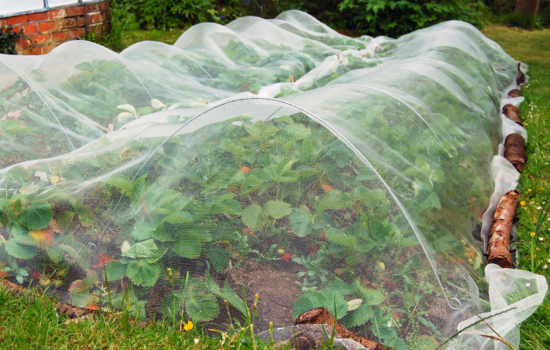There’s nothing worse than waking up, going outside to check on your garden, and finding leaves torn apart, stems chewed, or plants looking like they fought a battle while you were peacefully sleeping.
I’ve been there. More than once. And every time, it feels like starting over — frustrating, discouraging, and just plain confusing.
What’s happening while the world’s asleep is that certain pests, especially the sneaky ones, come out under cover of darkness. During the day, your garden might look fine.
But at night, caterpillars, slugs, snails, and beetles get to work, quietly devouring all the effort you put into growing something beautiful and healthy.
That’s why learning how to protect your plants while you sleep from pests that attack at night is something every home gardener or hydroponic grower needs to master.
I want to walk you through what I’ve learned — not from textbooks, but from digging in the soil, testing different methods, failing a few times, and finally finding what works.
Whether you’re just getting started or have been gardening for years, I’m going to help you identify the problem, prevent it, and protect your plants every single night.
First, Know Your Enemy: What Really Attacks at Night?
Let’s be clear: not all pests are nocturnal. But the ones that are can do serious damage before you even realize they’re there. In my garden, I’ve noticed the worst culprits are:
- Slugs and snails: They love moisture, feed after dark, and leave a slimy trail behind.
- Caterpillars: Especially armyworms and cutworms, which chew entire leaves or stems overnight.
- Earwigs and beetles: Hide in soil or mulch during the day and come out to feed once it’s dark.
- Grasshoppers (in some areas): More active around dusk and dawn.
- Crickets and mole crickets: Often underestimated, but extremely destructive to roots and seedlings.
So, pests that attack at night: how to protect your plants while you sleep starts with identifying who’s responsible. Once you know that, you can start choosing the right method to fight back.
Observation Is a Tool — Even at Night
One of the biggest shifts in my gardening journey came when I stopped waiting for daylight to assess the damage. If you suspect night pests, grab a flashlight and go outside after dark.
Check under the leaves, along the soil line, and around the edges of your containers or beds.
You’ll often spot slugs sliding around, caterpillars munching away, or beetles scurrying when the light hits them. Trust me, it’s eye-opening — and sometimes kind of creepy — but this one habit can transform how you respond to pest problems. You can’t treat what you can’t see.
Create a Physical Barrier While You Sleep
Sometimes, the best solution is the simplest one. I started using netting and mesh barriers on certain plants during vulnerable stages, especially seedlings and leafy greens.
Lightweight row covers are perfect for this. They let air, light, and even water through but block access to larger pests crawling in from nearby ground.
For slugs and snails, I had great results using copper tape around my pots. It sounds strange, but they really won’t cross copper — it gives them a tiny electric shock.
You can wrap it around your containers, raised beds, or even use copper mesh as a perimeter.
Another trick I love is using plastic cups or cut bottles around the base of young plants. It forms a collar that prevents cutworms from slicing through stems overnight — something that has saved many of my lettuces.

Keep the Area Around Your Plants Clean and Dry
If you’re not keeping the space around your plants tidy, you might be inviting night pests without realizing it. I learned this the hard way when I left too much mulch, dead leaves, or stacked pots around the garden.
Snails, slugs, and beetles love hiding in moist, dark places during the day. If you clean up debris, reduce humidity, and avoid overwatering late in the afternoon, you create an environment that’s less inviting for them at night.
Another thing that helps is spacing your plants properly. Airflow between them doesn’t just reduce disease — it also makes it harder for pests to travel unseen under dense canopies.
Natural Predators: The Protection You Don’t See
One of the best ways I’ve found to reduce nighttime damage is to encourage beneficial predators. Frogs, toads, birds, and even certain beetles and spiders are incredible allies.
You might not see them often, but they’re working while you sleep.
I added a small water feature near my garden to attract frogs. I also leave a couple of flat stones where toads can hide during the day. These little friends eat slugs, caterpillars, and many other night pests without you having to lift a finger.
Even birds that feed in the morning help control night pests by eating them as they rest. So, don’t chase all the wildlife away — some of them are your best defense.
Use Homemade Baits and Traps That Work While You Sleep
Over time, I’ve tested many homemade traps. Some failed miserably. Others became part of my regular routine. One that’s always worked for slugs and snails is the classic beer trap.
Take a shallow container, bury it up to the rim near your plants, and fill it with cheap beer. The smell attracts the slugs, they fall in, and they can’t get back out. It’s effective, safe, and you’ll be surprised by how many you’ll find by morning.
Another method I like is the banana peel trick for beetles and earwigs.
Place a banana peel in a small container or plastic bag near your plants overnight. These pests are drawn to the sweetness. In the morning, seal the bag and dispose of them far away from your garden.
Try Organic Sprays, But Don’t Rely on Them Alone
I do use natural sprays, but I treat them as part of a broader strategy — not a magic solution. Neem oil, garlic spray, and chili-pepper blends can deter pests, especially if you apply them at dusk when the garden is cooling down.
Neem is especially helpful for caterpillars and beetles. It doesn’t kill on contact but interrupts their ability to feed and reproduce. Be sure to apply it consistently — and never during hot, sunny hours.
That said, spraying alone won’t solve the problem if your environment is inviting pests. It has to go hand-in-hand with the steps I’ve shared here.
Stay Consistent, Stay Observant
I wish I could tell you there’s one perfect solution to protect your plants overnight — but the truth is, it takes a combination of small efforts. Each action, done consistently, adds a layer of protection. And over time, you’ll notice your plants staying healthier through the night.
That’s the beauty of learning how to protect your plants while you sleep from pests that attack at night. It’s not about panic or reaction. It’s about building awareness, prevention, and healthy garden habits.
These days, when I walk into my garden in the morning, I don’t worry like I used to. I know I’ve set up physical barriers, removed hiding spots, encouraged the right predators, and built an environment that supports strong plants.
Pests That Attack at Night: How to Protect Your Plants While You Sleep — It’s Easier Than You Think
If you’re just starting your garden or hydroponic system, don’t wait for the first pest to show up. Prepare now. Use what you’ve learned today and start applying even just one method this week. Your future self — and your plants — will thank you.
And the best part is, you don’t need chemicals, expensive tools, or complicated routines. Just attention, intention, and a bit of consistency.
Because the truth is, pests that attack at night: how to protect your plants while you sleep isn’t about fighting nature. It’s about working with it, understanding it, and setting up your garden to thrive — even when the lights go out.
